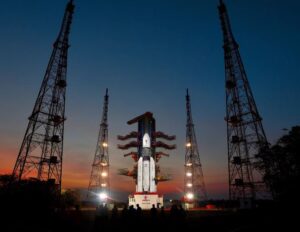India revises Gaganyaan human spaceflight plan, delays Chandrayaan-3
By Andrew Jones

HELSINKI — India has revised target dates for launches of its human spaceflight missions and the Chandrayaan-3 lunar landing following COVID-19-related delays.
The Indian Space Research Organisation (ISRO) was targeting August 2022 for the launch to mark the 75th anniversary of Indian independence. However the first human spaceflight demonstration will now follow after a second uncrewed test flight now planned for 2022-23, chairman K Sivan has said.
ISRO is targeting a first uncrewed test flight in December this year. The mission will involve human-rated Geosynchronous Satellite Launch Vehicle Mark III rocket with a modified upper stage compatible with a crew module and crew escape system, according to Times of India.
The first uncrewed mission was initially planned to launch in December 2020, following the formal announcement of the Gaganyaan project in August 2018. India had late last year stated that the Gaganyaan project will be “slightly delayed” due to COVID-19.
The first crewed mission will carry three astronauts with one backup. Four pilots selected for the program are participating in astronaut training in Russia.
India is aiming to join Russia, the United States and China as the only countries to have achieved independent human spaceflight capabilities. The country is also at this early stage looking beyond low Earth orbit.
India’s Department of Space recently released the draft “Humans in Space Policy” into the public domain for comments and suggestions ahead of potential cabinet approval.
The document states that the Humans in Space Policy “aims for sustained human presence in space as an instrument for development, innovation and foster collaborations in alignment with national interests.”
In pursuing the draft the Department of space would be expected to “define [a] long-term road map for sustained human presence in low earth orbit and undertaking exploration missions beyond low earth orbit.”
Necessary technologies for enabling sustained human presence in LEO and beyond as stated to include regenerative life support systems, rendezvous and docking systems, inflatable habitats and extravehicular activity suits.
Utilizing international cooperation, developing ecosystems, encouraging entrepreneurship and enhancing public involvement are also noted as key tasks.
Second lunar landing attempt delayed
Chandrayaan-3, India’s third mission to the moon, is likely to slip to 2022, ISRO chairman K Sivan told Press Trust of India news agency.
The mission will involve a lander and a small rover similar to Chandrayaan-2, but no orbiter.
The 2019 Chandrayaan-2 mission successfully put an orbiter around the moon but the landing attempt ended in loss of communications despite a nominal descent down to an altitude of around two kilometers.
Chandrayaan-3 is expected to target the same landing site, around 70.9 degrees south of the lunar equator. The Chandrayaan-2 orbiter will operate as a communications relay for the Chandrayaan-3 lander.
If successful Chandrayaan-3 could make India the fourth country to successfully soft-land on the moon.
K Sivan told press that the mission and its planned success will form the basis of ISRO interplanetary missions. India is also planning a Venus orbiter for launch in 2024.
India is meanwhile preparing for the launch of the PSLV-C51 (the 53rd Polar Satellite Launch Vehicle mission) from Satish Dhawan Space Center, Sriharikota, at 11:53 p.m. Eastern, Feb. 27.
The Amazonia-1 optical earth observation satellite of National Institute for Space Research (INPE) of Brazil is the primary payload. It will be joined by 18 smaller passenger satellites.
The mission will be India’s first launch of 2021, following a COVID-19-hit 2020.
February 23, 2021 at 04:32PM
via SpaceNews read more...

Post a Comment